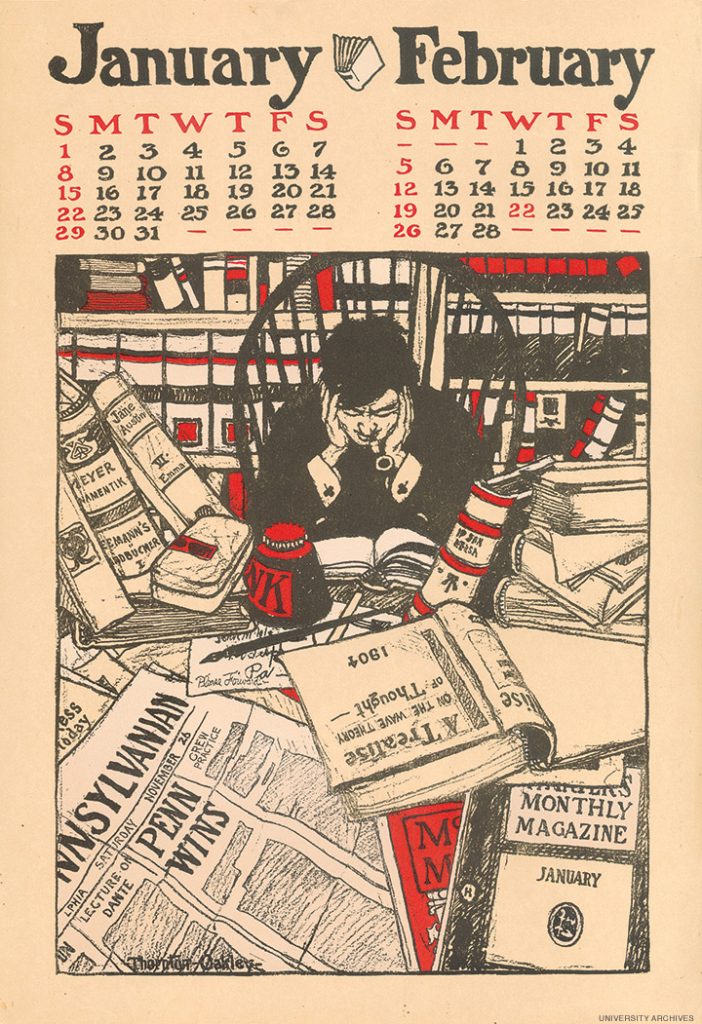
“Illustration is the highest type of pictorial art,” said Thornton Oakley Ar1901 GAr1902, in praise of his teacher, the artist Howard Pyle, “ … because illustration is simply a pictorial making clear, and if a picture makes clear a message in a big way, it is an illustration, whether it be made for magazine, book, mural decoration, or exhibition.” Or calendar, we might add.
This image is taken from a 1905 University calendar, illustrated by Oakley, who studied illustration at Pyle’s Brandywine Valley art school after graduation.
A 1908 version was advertised for sale in the Daily Pennsylvanian as “seven snappy drawings of college life. Price, 60 cents.”
Born in Pittsburgh, Oakley was drawn toward industrial themes, and his study of architecture contributed to his success as an artist. He was commissioned by the Pennsylvania Railroad, Philadelphia Electric, Sun Oil, and many others to draw shipyards, railways, and large machinery. Repeat customers also included magazines such as Collier’s, Harper’s Monthly, Scribner’s, and National Geographic.
From 1938 to 1939, he painted six 12-foot-tall murals for the Franklin Institute in Philadelphia, depicting the evolution of scientific discoveries, which can still be seen there today. He also illustrated numerous travel guides written by his wife, Amy Oakley. And the Gazette used a series of his depictions of Benjamin Franklin’s life on our covers throughout 1928.
But Oakley recalled his early days of learning from Pyle with humility: “My attempts were terrifying to behold, and when H. P. came to me to criticize my work, he paused for a long, long time before speaking, and I know he must have been appalled.”
He would go on to become a drawing instructor himself, first at Penn, and later as head of the illustration department at the Pennsylvania Museum and School of Industrial Art (now the University of the Arts).
By 1929, the Gazette described Oakley as “fascinated by the spectacle of industry, and in the hundreds of drawing he has made … [he] has caught the vigor, the drive, the war and the rush of modern industry. In addition, he has through great beauty of composition and treatment, added to the raw turbulence a mystical overtone, a feeling of the human desire to create which expresses itself into these tall buildings flung against the sky, these thundering cities.” —NP




